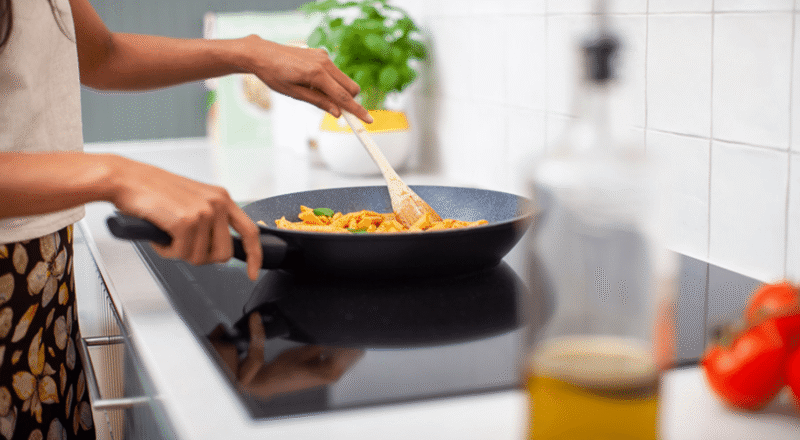Cooking with cast iron is a cherished tradition in many kitchens around the world. Known for its durability and excellent heat retention, cast iron is a favorite among professional chefs and home cooks alike. However, with the rise of induction cooktops, many users have noticed a peculiar issue: cast iron surface discoloration from induction. This article explores the potential causes of this phenomenon and offers practical solutions to maintain the pristine condition of your cast iron cookware.

Understanding Discoloration
Before diving into solutions, it’s crucial to understand what causes discoloration in cast iron when used on induction cooktops. Induction cooking relies on electromagnetic fields to generate heat, which can sometimes interact with the iron in ways that cause changes in appearance.
Why Does It Happen?
The primary cause of discoloration is the interaction between the electromagnetic field and the cast iron. This can lead to changes in the surface, especially if the cookware is not properly seasoned or if the heat is too high. Cast iron becoming smoky on induction can also contribute to discoloration.
Impact of High Heat
While cast iron is designed to withstand high temperatures, using an induction cooktop often means that heat is concentrated in specific areas, leading to uneven heating. This can cause certain sections of the pan to overheat, resulting in surface discoloration.
Cold Spots and Overheating
The issue of cold spots in cast iron on induction is common and can exacerbate discoloration. When parts of the pan are overly hot while others remain cooler, it can lead to uneven cooking and surface changes.
Solutions for Discoloration
Fortunately, there are several steps you can take to prevent or reduce discoloration in your cast iron cookware when using an induction cooktop.
Proper Seasoning
One of the most effective ways to protect your cast iron is by ensuring it’s properly seasoned. A well-seasoned pan has a protective layer that can help buffer against the effects of high heat and electromagnetic fields.
Adjusting Heat Levels
Carefully managing the heat level on your induction cooktop is another crucial step. Avoid using the highest settings, and instead, start with medium heat and adjust as necessary.
Using Compatible Cookware
Make sure your cookware is compatible with induction cooking. Some varieties of cast iron, such as enameled cast iron on induction, may offer better protection against discoloration.
Additional Considerations
While cast iron discoloration is largely a cosmetic issue, it can be indicative of other problems that might affect the longevity of your cookware.
Ensuring Even Heating
To minimize discoloration, ensure even heating across the surface of your cookware. Consider using a diffuser if you notice significant temperature variations.
Regular Maintenance
Regular maintenance, including cleaning and re-seasoning, can help maintain the integrity and appearance of your cast iron. For more tips on maintaining your cookware, visit the Lodge Cast Iron Blog.
Conclusion
In conclusion, while cast iron surface discoloration from induction is a common issue, it can be effectively managed with proper care and attention. By understanding the causes and taking proactive steps, you can ensure your cookware remains in excellent condition for years to come.

FAQs
Does discoloration affect cooking?
No, discoloration is primarily a cosmetic issue and does not affect the cooking performance of cast iron.
Can I use enameled cast iron on induction?
Yes, enameled cast iron on induction is perfectly safe and may help reduce discoloration.
How often should I re-season my cast iron?
It depends on usage, but generally, re-seasoning every few months is recommended to maintain its surface.
This article contains affiliate links. We may earn a commission at no extra cost to you.

